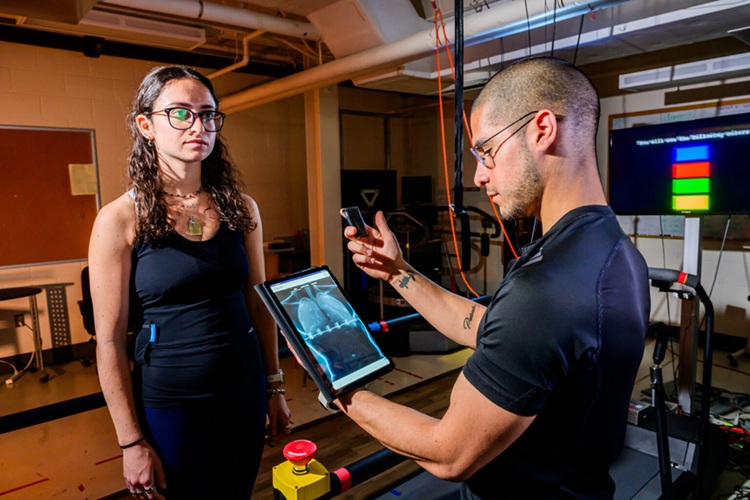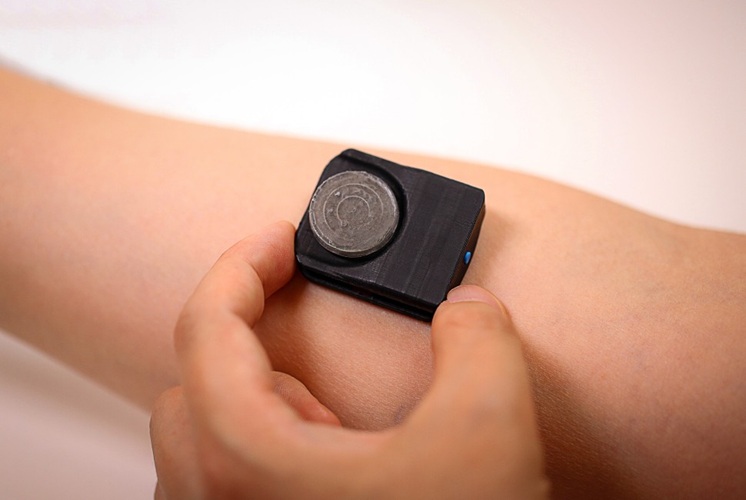3D Body Mapping Helps Repair Cellular Damage
|
By HospiMedica International staff writers Posted on 02 Jul 2019 |

Image: A floating 3D scaffold providing efficient tissue engineering monitoring (Photo courtesy of ACS Nano).
A new study reveals an innovative three-dimensional (3D) instrumented mapping technology that can monitor and track the behavior of engineered cells and tissues.
Developed by researchers at Purdue University (Lafayette, IN, USA) and Hanyang University (Seoul, Republic of Korea), the ultrabuoyant 3D scaffold remains afloat on the surface of a culture medium, providing a favorable environment for the electronic components, which remain in the air while the cells reside and grow underneath. This enables high-fidelity recording of electrical cell–substrate impedance and electrophysiological signals over long periods of time, even weeks. Currently, long-term reliable 3D monitoring is limited by the wet cell culture conditions, which are unfavorable to electronic instrument settings.
The new scaffold, on the other hand, can provide real-time monitoring of the cellular behaviors and functions, thus providing a profound impact on underlying biophysics and disease modeling. A battery of comprehensive in-vitro studies undertaken by the researchers revealed the utility of the platform as an effective tool for drug screening and tissue development following cancer treatments. They are now testing the potential of the device in stem cell therapies and the regenerative treatment of diseases. The study was published in the June 19, 2019, issue of ACS Nano.
“Tissue engineering already provides new hope for hard-to-treat disorders, and our technology brings even more possibilities. My hope is to help millions of people in need,” said senior author biomedical and mechanical engineer Chi Hwan Lee, PhD, of the Purdue College of Engineering. “This device offers an expanded set of potential options to monitor cell and tissue function after surgical transplants in diseased or damaged bodies.”
Tissue engineering, often called regenerative medicine, combines cell cultures, engineering and materials methods, and biochemical and physicochemical factors to improve or replace biological tissues. It involves the use of a tissue scaffold for the formation of new viable tissue for a medical purpose. While it was once categorized as a sub-field of biomaterials, having grown in scope and importance it can be considered as a field in its own.
Related Links:
Purdue University
Hanyang University
Developed by researchers at Purdue University (Lafayette, IN, USA) and Hanyang University (Seoul, Republic of Korea), the ultrabuoyant 3D scaffold remains afloat on the surface of a culture medium, providing a favorable environment for the electronic components, which remain in the air while the cells reside and grow underneath. This enables high-fidelity recording of electrical cell–substrate impedance and electrophysiological signals over long periods of time, even weeks. Currently, long-term reliable 3D monitoring is limited by the wet cell culture conditions, which are unfavorable to electronic instrument settings.
The new scaffold, on the other hand, can provide real-time monitoring of the cellular behaviors and functions, thus providing a profound impact on underlying biophysics and disease modeling. A battery of comprehensive in-vitro studies undertaken by the researchers revealed the utility of the platform as an effective tool for drug screening and tissue development following cancer treatments. They are now testing the potential of the device in stem cell therapies and the regenerative treatment of diseases. The study was published in the June 19, 2019, issue of ACS Nano.
“Tissue engineering already provides new hope for hard-to-treat disorders, and our technology brings even more possibilities. My hope is to help millions of people in need,” said senior author biomedical and mechanical engineer Chi Hwan Lee, PhD, of the Purdue College of Engineering. “This device offers an expanded set of potential options to monitor cell and tissue function after surgical transplants in diseased or damaged bodies.”
Tissue engineering, often called regenerative medicine, combines cell cultures, engineering and materials methods, and biochemical and physicochemical factors to improve or replace biological tissues. It involves the use of a tissue scaffold for the formation of new viable tissue for a medical purpose. While it was once categorized as a sub-field of biomaterials, having grown in scope and importance it can be considered as a field in its own.
Related Links:
Purdue University
Hanyang University
Latest Health IT News
- Printable Molecule-Selective Nanoparticles Enable Mass Production of Wearable Biosensors
- Smartwatches Could Detect Congestive Heart Failure
- Versatile Smart Patch Combines Health Monitoring and Drug Delivery
- Machine Learning Model Improves Mortality Risk Prediction for Cardiac Surgery Patients
- Strategic Collaboration to Develop and Integrate Generative AI into Healthcare
- AI-Enabled Operating Rooms Solution Helps Hospitals Maximize Utilization and Unlock Capacity
- AI Predicts Pancreatic Cancer Three Years before Diagnosis from Patients’ Medical Records
- First Fully Autonomous Generative AI Personalized Medical Authorizations System Reduces Care Delay
- Electronic Health Records May Be Key to Improving Patient Care, Study Finds
- AI Trained for Specific Vocal Biomarkers Could Accurately Predict Coronary Artery Disease
Channels
Critical Care
view channel
Novel Intrabronchial Method Delivers Cell Therapies in Critically Ill Patients on External Lung Support
Until now, administering cell therapies to patients on extracorporeal membrane oxygenation (ECMO)—a life-support system typically used for severe lung failure—has been nearly impossible.... Read more
Generative AI Technology Detects Heart Disease Earlier Than Conventional Methods
Detecting heart dysfunction early using cost-effective and widely accessible tools like electrocardiograms (ECGs) and efficiently directing the right patients for more expensive imaging tests remains a... Read more
Wearable Technology Predicts Cardiovascular Risk by Continuously Monitoring Heart Rate Recovery
The heart's response to physical activity is a vital early indicator of changes in health, particularly in cardiovascular function and mortality. Extensive research has demonstrated a connection between... Read more
Wearable Health Monitoring Device Measures Gases Emitted from and Absorbed by Skin
The skin plays a vital role in protecting our body from external elements. A key component of this protective function is the skin barrier, which consists of tightly woven proteins and fats that help retain... Read moreSurgical Techniques
view channel
Intravascular Imaging for Guiding Stent Implantation Ensures Safer Stenting Procedures
Patients diagnosed with coronary artery disease, which is caused by plaque accumulation within the arteries leading to chest pain, shortness of breath, and potential heart attacks, frequently undergo percutaneous... Read more
World's First AI Surgical Guidance Platform Allows Surgeons to Measure Success in Real-Time
Surgeons have always faced challenges in measuring their progress toward surgical goals during procedures. Traditionally, obtaining measurements required stepping out of the sterile environment to perform... Read morePatient Care
view channel
Portable Biosensor Platform to Reduce Hospital-Acquired Infections
Approximately 4 million patients in the European Union acquire healthcare-associated infections (HAIs) or nosocomial infections each year, with around 37,000 deaths directly resulting from these infections,... Read moreFirst-Of-Its-Kind Portable Germicidal Light Technology Disinfects High-Touch Clinical Surfaces in Seconds
Reducing healthcare-acquired infections (HAIs) remains a pressing issue within global healthcare systems. In the United States alone, 1.7 million patients contract HAIs annually, leading to approximately... Read more
Surgical Capacity Optimization Solution Helps Hospitals Boost OR Utilization
An innovative solution has the capability to transform surgical capacity utilization by targeting the root cause of surgical block time inefficiencies. Fujitsu Limited’s (Tokyo, Japan) Surgical Capacity... Read more
Game-Changing Innovation in Surgical Instrument Sterilization Significantly Improves OR Throughput
A groundbreaking innovation enables hospitals to significantly improve instrument processing time and throughput in operating rooms (ORs) and sterile processing departments. Turbett Surgical, Inc.... Read moreBusiness
view channel
Expanded Collaboration to Transform OR Technology Through AI and Automation
The expansion of an existing collaboration between three leading companies aims to develop artificial intelligence (AI)-driven solutions for smart operating rooms with sophisticated monitoring and automation.... Read more















